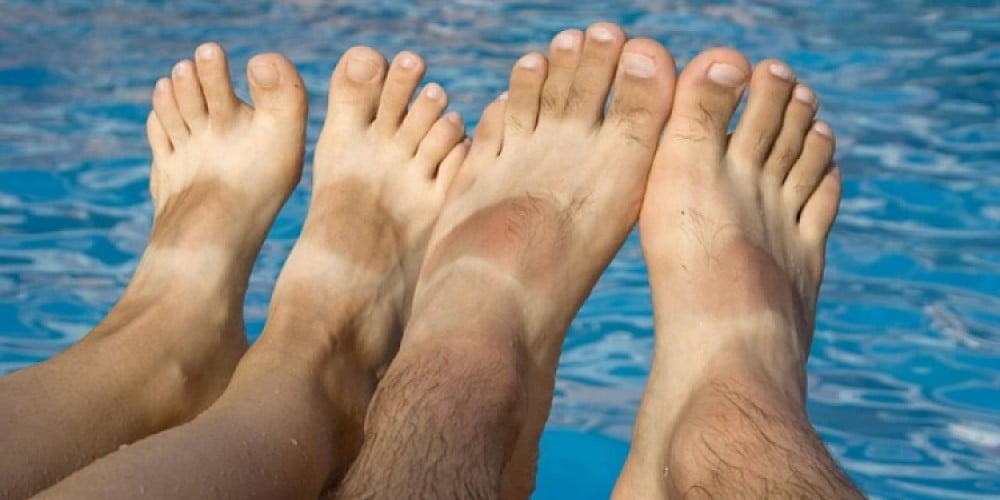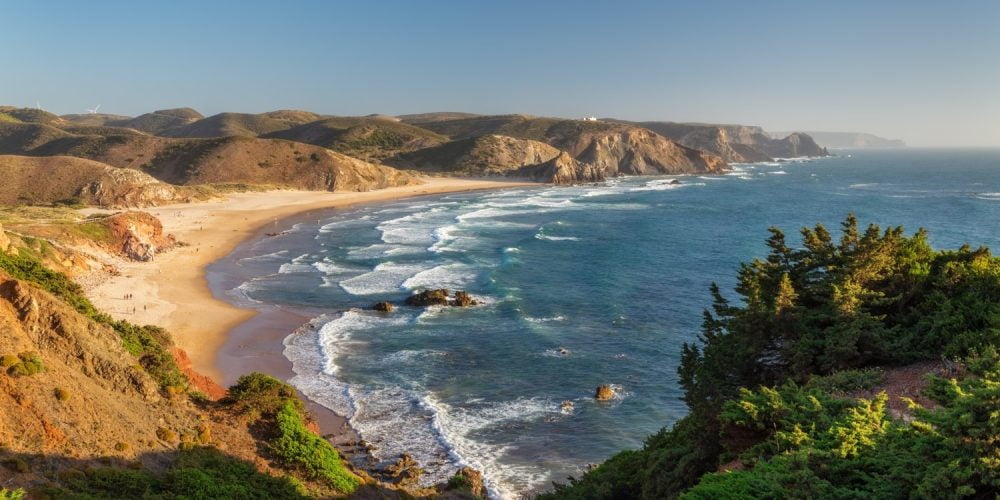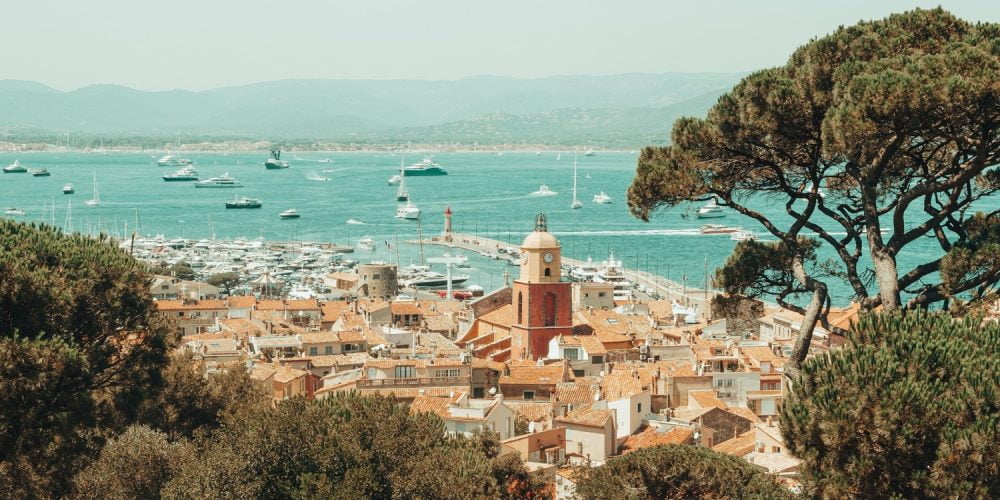
If you are looking for some tips on how to get the perfect tan for your skin type, you might want to check out gorgeousshop.com. They have a lot of information and products to help you achieve your desired shade of bronze. In this blog post, we will give you a brief overview of the different skin types and how they react to sun exposure, as well as some of the best tanning beaches in Europe.
Tanning is the process of darkening the skin due to the production of melanin, a pigment that protects the skin from ultraviolet (UV) radiation. The amount and type of melanin that your skin produces depends on your genetic makeup, as well as on external factors such as sun exposure, hormones, and medications. Melanin can be divided into two types: eumelanin and pheomelanin. Eumelanin is responsible for brown and black hues, while pheomelanin is responsible for red and yellow hues. People with darker skin have more eumelanin than pheomelanin, while people with lighter skin have more pheomelanin than eumelanin.
While tanning can give you a healthy glow and boost your mood, it also comes with some risks. UV radiation can damage the DNA of your skin cells, leading to premature aging, wrinkles, sun spots, and skin cancer. The World Health Organization (WHO) classifies UV radiation as a human carcinogen, meaning that it can cause cancer in humans. According to the WHO, more than 2 million cases of skin cancer are diagnosed each year worldwide, and about 65,000 people die from it. Therefore, it is important to protect your skin from excessive sun exposure by using sunscreen, wearing protective clothing, and avoiding the sun during peak hours.
There is no evidence to suggest that colder beaches are less dangerous for tanning. In fact, the risk of skin damage from UV radiation is still present even on cloudy or cooler days 1. It is important to protect your skin from the sun’s harmful rays by wearing protective clothing, applying sunscreen with a high SPF, and seeking shade during peak hours of sunlight 2.
Learn more
1
webmd.com
2
skincancer.org
3
aad.org
Mountain tanning is a popular activity for people who want to get a natural and healthy glow on their skin. However, it also comes with some risks and challenges that need to be considered before heading to the slopes. Here are some tips and advice on how to enjoy mountain tanning safely and effectively.
– Choose the right time and place. The best time for mountain tanning is between 10 a.m. and 2 p.m., when the sun is at its highest and strongest. However, this also means that the UV rays are more intense and can cause sunburns and skin damage. Therefore, it is important to choose a location that has some shade and protection from the wind, such as a tree or a rock. Avoid areas that are covered with snow or ice, as they can reflect up to 80% of the sun’s rays and increase your exposure.
– Use sunscreen and protective clothing. Even if you are tanning, you still need to protect your skin from the harmful effects of the sun. Apply a sunscreen with at least SPF 30 and broad-spectrum protection, which blocks both UVA and UVB rays. Reapply every two hours or more often if you sweat or wipe your skin. Wear sunglasses, a hat, and a lip balm with SPF to protect your eyes, head, and lips. You can also wear a light-colored shirt or a cover-up to prevent overheating and sunburns on your body.
– Hydrate and moisturize. Mountain tanning can dehydrate your skin and body, especially at high altitudes where the air is thinner and drier. Drink plenty of water before, during, and after your tanning session to replenish your fluids and electrolytes. You can also bring some snacks that are rich in antioxidants, such as berries, nuts, or dark chocolate, to boost your skin’s health and prevent oxidative stress. After tanning, apply a moisturizer or an after-sun lotion to soothe and hydrate your skin.
– Be aware of the signs of sun damage. Mountain tanning can be fun and rewarding, but it can also cause serious problems if you overdo it or ignore the warning signs of sun damage. Some of the symptoms include redness, swelling, blisters, pain, itching, peeling, fever, nausea, headache, or dizziness. If you experience any of these signs, stop tanning immediately and seek medical attention. You may have sunburns, sun poisoning, heat exhaustion, or heat stroke, which can have long-term consequences for your health and appearance.
Tanning is the process of darkening the skin by exposure to ultraviolet (UV) radiation from the sun or artificial sources. Tanning can have various effects on the skin, depending on the amount and duration of exposure, the skin type, and the age of the person.
Some people may tan for cosmetic reasons, to enhance their appearance or to hide skin imperfections. However, tanning can also have negative consequences, especially for people who are older than 50 years. Tanning can increase the risk of skin cancer, premature aging, wrinkles, sunburn, eye damage, and immune system suppression. Tanning can also interfere with some medications and medical conditions.
Therefore, tanning for people who are older than 50 years is not recommended by most dermatologists and health experts. They advise people to avoid tanning beds and sunlamps, which emit high doses of UV radiation that can cause skin damage and cancer. They also recommend using sunscreen with a sun protection factor (SPF) of at least 15, wearing protective clothing and sunglasses, and limiting sun exposure between 10 a.m. and 4 p.m., when the UV rays are strongest.
Tanning for people who are older than 50 years may seem appealing to some people who want to look younger or more attractive, but it can have serious and lasting effects on their health and well-being. It is better to embrace one’s natural skin color and take care of it with proper hydration, moisturization, and nutrition.
The consequences of tanning on a higher age can vary from person to person, but they generally become more noticeable and severe over time. According to some studies, long-term sun exposure can cause your skin to become thickened, leathery, and wrinkled. You may also have dark spots on your skin. These happen because long-term exposure to UV rays makes your skin less elastic. Tanning can also increase the risk of melanoma, the deadliest form of skin cancer, by up to 47%. Melanoma can develop anywhere on your body, even in places that are not exposed to the sun. Tanning can also damage your eyes and cause cataracts, which are cloudy areas in the lens of your eye that affect your vision. Tanning can also suppress your immune system, making you more vulnerable to infections and diseases.
Besides using sunscreen, wearing protective clothing, and avoiding the sun during peak hours, there are some other ways to protect your skin from the sun. These include:
Whenever possible, try to stay in the shade or under an umbrella when you are outdoors. This can reduce your exposure to UV rays by up to 50%.
UV rays can also damage your eyes and increase your risk of cataracts and macular degeneration. Wearing sunglasses that block 99% or more of UVA and UVB rays can protect your eyes and the surrounding skin.
Some foods can help boost your skin’s natural defense against sun damage. These include foods rich in antioxidants, such as fruits, vegetables, nuts, seeds, and green tea. Antioxidants can help prevent or repair the damage caused by free radicals, which are molecules that are generated by UV exposure.
Staying hydrated can help keep your skin moist and supple, which can prevent dryness and cracking. Water can also help flush out toxins from your body and improve your overall health.

Not all skin types tan the same way. Dermatologists classify skin types into six categories based on their ability to tan and burn. These are:
Very fair skin that always burns and never tans. People with this skin type usually have blond or red hair, blue or green eyes, and freckles.
Fair skin that usually burns and tans minimally. People with this skin type usually have blond or light brown hair, blue or green eyes, and light-colored skin.
Medium skin that sometimes burns and tans gradually. People with this skin type usually have dark blond or brown hair, hazel or brown eyes, and beige or olive skin.
Olive or light brown skin that rarely burns and tans easily. People with this skin type usually have dark brown hair, dark eyes, and tan or brown skin.
Brown or dark brown skin that very rarely burns and tans very easily. People with this skin type usually have black hair, dark eyes, and dark brown or black skin.
Black or very dark brown skin that never burns and tans very easily. People with this skin type usually have black hair, dark eyes, and very dark brown or black skin.
The different skin types require different levels of sun protection and tanning products. You can find out more about the best products for your skin type at gorgeousshop.com.
If you are looking for some sunny destinations to show off your tan, here are some of the best tanning beaches in Europe:

This region in southern Portugal is famous for its golden sandy beaches, clear blue waters, and sunny climate. You can enjoy the sun at popular spots like Praia da Rocha, Praia da Marinha, or Praia da Luz.

Rock of Penon by Ifach. Mediterranean coast landscape in the city of Calpe, Alicante, Spain
This city in southeastern Spain is a popular tourist destination for its warm weather, lively nightlife, and beautiful beaches. You can soak up the sun at places like Playa del Postiguet, Playa de San Juan, or Playa de la Albufereta.

Saint-Tropez
This stretch of coastline in southeastern France is also known as the French Riviera. It is renowned for its glamorous resorts, stunning scenery, and sunny weather. You can tan at places like Cannes, Nice, or Saint-Tropez.
This resort town in Bulgaria is one of the most affordable and fun places to enjoy the sun in Europe. It has a long sandy beach that offers plenty of activities, entertainment, and nightlife options.
The best beaches for sunbathing in Europe are subjective and depend on personal preferences. However, here are some of the top beaches in Europe that are perfect for sunbathing:
This beach is located in the Lofoten Islands and is known for its stunning beauty. The beach has creamy sands and sapphire sea, with spiky granite peaks thrusting above. The water is chilly, but the beach is perfect for sunbathing 1.
This beach is located on Sardinia’s east coast and is known for its snow-white pebbles giving way to a sea of purest aquamarine blue. Limestone cliffs jut dramatically above the bay, as does Monte Caroddi, a 148m-high needle of rock beloved of climbers 1.
This beach is located in the Outer Hebrides and is known for its remoteness. Through dunes and wind-bent machair grasses, you reach this ravishing three-mile expanse of white sand, sliding gently into a turquoise sea. It’s often empty but for seabirds trilling overhead and the occasional porpoise or otter 1.
I understand your concern. It is true that some of the search results for “Scottish sunbathing legal” may contain information about nudity in public. However, it is important to note that nudity in public is not the same as sunbathing. Sunbathing is a common activity in Scotland, especially during the summer months when the weather is warm⁹.
While it is true that some beaches in Scotland may be clothing-optional, it is important to note that this is not the case for all beaches. In fact, many beaches in
Located in Argyll, Westport Beach is one of the most beautiful beaches in the west coast of Scotland. It stretches over 6 miles and boasts the Machrihanish Dunes as its backdrop, a Site of Scientific Interest (SSSI) and the biggest sand dune area in Argyll. Popular with surfers and dog walkers, Westport Beach is also a wonderful place to relax and enjoy a picnic ⁶.
North Berwick West Beach has a long stretch of sand with views to the island of Craigleith and the Bass Rock. It is a popular family beach providing an ideal location for sunbathing, bird watching, paddling, picnics and dog walking ⁷.
Located on the eastern coastline of the Kingdom of Fife, St Andrews West Sands is a beautiful beach with a long stretch of sand and dunes. It is a popular spot for windsurfing, kite surfing, and other water sports ⁸.
Yes, West Sands is a beach located in St Andrews, Scotland 1 2 3. It is famous for its appearance in the opening sequence of the movie Chariots of Fire 3. The beach is approximately 2 miles long and is backed by dunes and the world-renowned golf course 3. It is a popular destination for walking, running, swimming, and sand yachting 3.
I hope this information helps. Let me know if you have any other questions!
Source: Conversation with Bing, 12/25/2023
(1) Climate & Weather in Scotland by Seasons | VisitScotland. https://www.visitscotland.com/travel-planning/weather.
(2) Westport Beach, West of Kintyre – Beaches | VisitScotland. https://www.visitscotland.com/info/see-do/westport-beach-p2571701.
(3) North Berwick West Beach, Edinburgh & The Lothians – Beaches. https://www.visitscotland.com/info/see-do/north-berwick-west-beach-p2570201.
(4) St Andrews West Sands, The Kingdom of Fife – Beaches. https://www.visitscotland.com/info/see-do/st-andrews-west-sands-p2571211.
(5) This is where you can be naked in public in the UK – BBC News. https://www.bbc.co.uk/news/newsbeat-33092812.
(6) Nudity in Public – Guidance on handling cases of Naturism. https://www.cps.gov.uk/legal-guidance/nudity-public-guidance-handling-cases-naturism.
(7) Clothing laws by country – Wikipedia. https://en.wikipedia.org/wiki/Clothing_laws_by_country.
(8) . https://bing.com/search?q=West+Beach%2c+Scotland+location.
(9) West Beach Caravan Park. http://westbeachcaravanpark.co.uk/.
(10) Scotland Water Temperatures | United Kingdom. https://www.seatemperature.org/europe/united-kingdom/scotland/.
(11) UK sea tempreatures | UK Beach Guide. https://www.thebeachguide.co.uk/sea-temperature.
This beach is located in Corsica’s southeast and is known for its long curve of pale, powder-soft sand shelving into cerulean blue waters as clear as glass. Backed by fragrant umbrella pines, hemmed in by wooded hills that strum with cicadas come sundown, and overlooking the Îles Cerbicale, this could well be the beach of your wildest Mediterranean dreams 1.
| Beach | Average July temp. High / Low | Average August temp. High / Low | Features |
|---|---|---|---|
| Haukland Beach Norway | 16,7°C / 11,1°C | 16,1°C / 10,6°C | Crystal clear water white sand mountain scenery |
| Cala Goloritzè Italy | 30°C / 18°C | 26°C / 16.5°C | Crystal clear water |
| St Andrews West Sands Scotland | 19°C / 10°C | 19°C / 9°C | Uninterrupted sand |
| Ajaccio Airport Corsica | 28°C / 18°C | 29°C / 18°C | International |
| Sunny Beach Bulgaria | 29°C / 18°C | 29°C / 18°C | Beach |
| Oostduinkerke Belgium | 21°C / 13°C | 21°C / 13°C | Beach |
We hope you enjoyed this blog post and learned something new about tanning. Remember to always protect your skin from the sun and use the right products for your skin type. You can find more information and products at gorgeousshop.com.
Leave a Reply